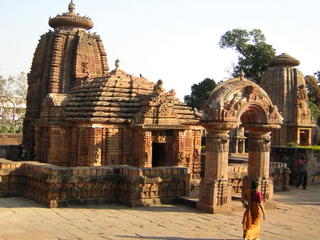I just thought I would share some of Ravi’s deep insights that we gained.
*********
Ravi took us to a village where AID was working. This was somewhere along the Orissa-Andhra border, but could be anywhere in India. When AID first went there, a wizened old freedom fighter there took some of the AID volunteers around, pointing out a problem. He first pointed at a silted well (which still had water), and the volunteers didn’t realize what the problem was. Then he took them to a large tank, deeply silted, with reeds growing all around it, but still with water. The volunteers still didn’t get it, as they saw water there (something missing in many dry villages). Then they realized how badly silted the tank was, and what its consequences were.
So, they met the farmers in the village, and asked them about the tank. The villagers understood that the tank was silted, and worried about water. The older farmers said that the silt was actually rich in nutrients, and in the old days farmers would come by before every planting season, and take silt away from the tank on their bullock carts to use in their fields. That way, the tank would remain well maintained, while their fields would benefit. So, the volunteers asked why the practice no longer continued.
They discovered that the farmers were quite marginal, and over time they were unable to afford to keep bullock carts (though most had bullocks to plough their fields with). So, there were no carts in the village. The few large farmers that existed in the village (who had carts) had shifted to using fertilizers, and did not need silt. So, the tank was dying, and they now worried about future water sources.
Invariably, government or even some NGO “fact-finding” missions do not bother to involve villagers. They come. They see. They “understand all”. ”The problem: silted tank. The solution: de-silt the tank.” So, thousands of rupees are spent on desilting the tank, which is silted again by the next monsoon. Or else, some well-meaning person somewhere far away will come up with a brainwave like “lets give them a tractor. This will be modern and efficient, and we’ll be really helping them then.” And a tractor will be thrust upon the villagers.
But if they had involved the villagers, they would have heard the following questions from the villagers. You may desilt it this year, but what happens next year? Who would pay for the fuel that a tractor needs? What happens if the tractor broke down, how could they repair it? Spare parts were expensive and available only in distant larger villages. Fuel itself was available only in villages 15 km away. Who would maintain the tractor? Who would be responsible for the tractor?
Clearly, just desilting the tank is a stopgap effort, and a tractor would not be an effective solution. Instead it would create 6 new problems!
In this case, AID found that a bullock cart would effectively help solve the problem!
But, does it end there? Would just giving a bullock cart have solved this problem?
AID talked to the villagers further. It could have ended right there, if AID had just given a bullock cart and two bullocks to the village, thinking the problem was solved. But the villagers very quickly pointed out that that would not work. If two bullocks were given, it would be very likely that the bullocks would be beaten to death, or underfed, or ill treated, since belonging to everyone meant that they wouldn’t belong to anyone. So, if bullocks were given, they would need to hire some one to look after them as well, an added expense! So, the villagers themselves proposed to use their own bullocks, to the cart that would be provided.
But even this wasn’t the complete solution.


There is more than one type of bullock cart. The “modern” cart, popularized by various groups and government subsidies, is a cart with pneumatic tires. This is effective in improving mobility and reducing load on bullocks, but only on even, level roads. The villagers, who clearly knew much more about bullock carts than any city-slicker did, collectively and unanimously said that the modern “tire” carts would never work. This was because the axles for these carts were extremely low. The tank was in marshy ground, didn’t have a road leading to it, and in order to take the silt out effectively, the cart needed to be taken into the tank itself. The old-fashioned large wooden wheeled bullock cart was perfectly suited for this task, but the “tire” carts were hopelessly inadequate.
In addition, repairing a traditional cart was something any farmer could do, but the rocky roads and rough terrain would easily puncture the tires of the modern “tire” carts, and repairs would be tedious, difficult and costly.
So, incredibly, the best solution in this case proved to be an old fashioned, cheap bullock cart. And the villagers themselves came up with the solution.
There were more levels of effectiveness. If a cart had been given to the community, in all probability in a few years it would have been broken down and become useless. Instead, if the cart was given as a cooperative loan, with the promise that once the cost of the cart had been repaid the same money would be given back to the community for another new need, the villagers would feel a strong incentive to use the cart well, AND repay it, in order to gain new benefits.
Incentive and involvement. Two key aspects that AID understood came from talking to the villagers.
It is easy now to understand why so many million dollar top-down government or World Bank schemes have failed miserably. Schemes, especially those determined by some distant office, are very ineffective, and sometimes cause new problems.
Ravi used a nice analogy to explain this. He asked us what Thakur Baldev Singh had told Jai and Veeru (in Sholay) when they asked him why he wanted them to catch Gabbar.
Remembering my Sholay lines well, I said ”Kyon ki loha lohe ko kaatha hain” (because steel cuts steel).
That beautifully sums up the situation.
The villagers did indeed represent the problems, but they represented the solutions as well.
Just as we do.
Update: The second part of this discussion can be found here, while the third and final part can be found here.












